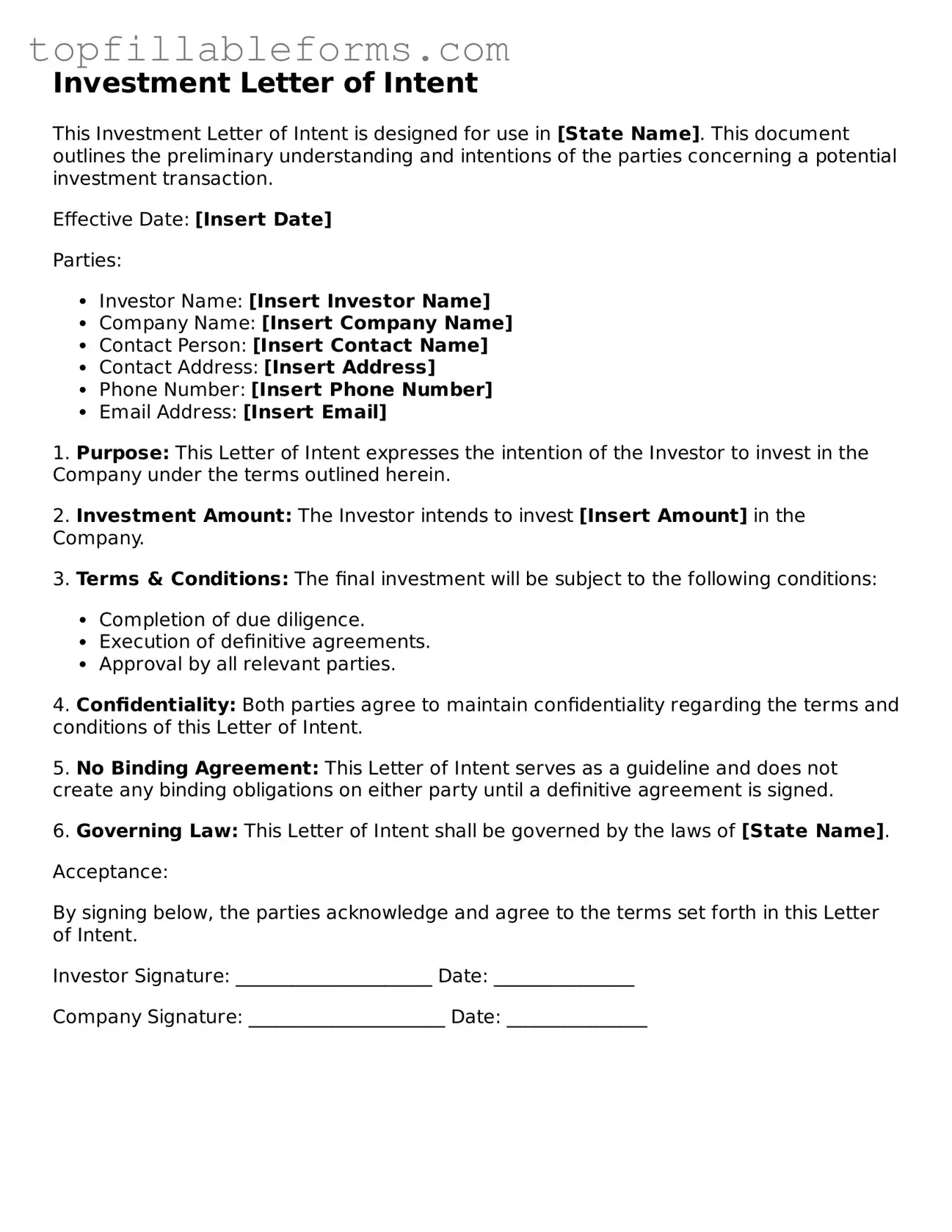Investment Letter of Intent
This Investment Letter of Intent is designed for use in [State Name]. This document outlines the preliminary understanding and intentions of the parties concerning a potential investment transaction.
Effective Date: [Insert Date]
Parties:
- Investor Name: [Insert Investor Name]
- Company Name: [Insert Company Name]
- Contact Person: [Insert Contact Name]
- Contact Address: [Insert Address]
- Phone Number: [Insert Phone Number]
- Email Address: [Insert Email]
1. Purpose: This Letter of Intent expresses the intention of the Investor to invest in the Company under the terms outlined herein.
2. Investment Amount: The Investor intends to invest [Insert Amount] in the Company.
3. Terms & Conditions: The final investment will be subject to the following conditions:
- Completion of due diligence.
- Execution of definitive agreements.
- Approval by all relevant parties.
4. Confidentiality: Both parties agree to maintain confidentiality regarding the terms and conditions of this Letter of Intent.
5. No Binding Agreement: This Letter of Intent serves as a guideline and does not create any binding obligations on either party until a definitive agreement is signed.
6. Governing Law: This Letter of Intent shall be governed by the laws of [State Name].
Acceptance:
By signing below, the parties acknowledge and agree to the terms set forth in this Letter of Intent.
Investor Signature: _____________________ Date: _______________
Company Signature: _____________________ Date: _______________
